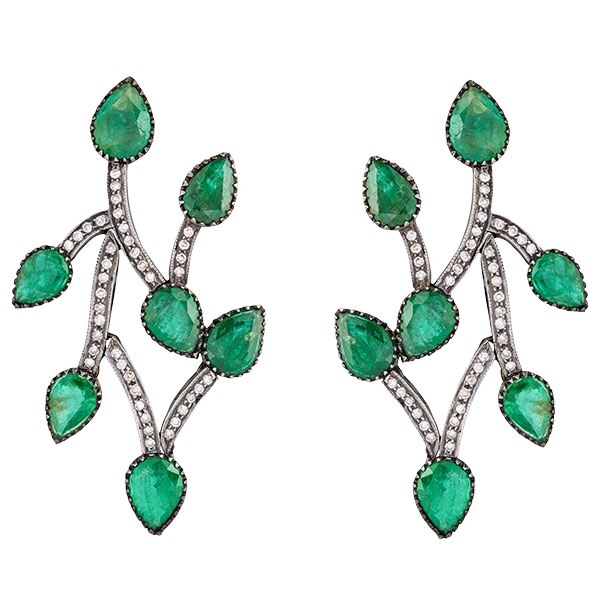
We asked 20 big thinkers across the industry to describe the most significant changes that will—or should—influence jewelry retail in the weeks, months, and years to come
If ever the jewelry industry needed a soothsayer, it’s now, as we stand at the crossroads of two profoundly different ways of life: pre- and post-COVID-19. How will the changes accelerated by the crises of this deeply challenging year—from digitization to our collective reckoning over racism—mature and evolve? When will the ground beneath our feet stop shaking? And what will the landscape of jewelry retail look like when it does? We asked 20 people representing a microcosm of our rich and diverse trade to provide a glimpse of the future as they see it, or wish to see it. We hope you appreciate their enlightening visions as much as we do.
 “Digital will become mainstream in a socially distanced world. There will definitely be change in people’s priorities, even in the way we spend. The consumer focus will now be more on sustainable and handcrafted products and products of high value which have a soul, versus mass-produced products. We also all have to look after the environment in order for the environment to look after us, so ethical practices and sustainability should become mandatory for all kinds of business.”
“Digital will become mainstream in a socially distanced world. There will definitely be change in people’s priorities, even in the way we spend. The consumer focus will now be more on sustainable and handcrafted products and products of high value which have a soul, versus mass-produced products. We also all have to look after the environment in order for the environment to look after us, so ethical practices and sustainability should become mandatory for all kinds of business.”
—Tarang Arora, CEO, Amrapali Jewels
(Top) Earrings with 19.28 cts. t.w. emeralds and 0.98 ct. t.w. diamonds in 18k gold and sterling silver; £5,600 ($7,166); amrapalijewels.com
 “This pandemic has pushed our industry faster than we expected to omnichannel. We will need to continue to invest in technology and meet our customers where they are. We do not think this is by any means the end of the physical store, but we must continue to advance the customer experience both within our four walls and outside. Additionally, manufacturers and retailers will need to continue to deepen their relationships to offer more to the end consumer.”
“This pandemic has pushed our industry faster than we expected to omnichannel. We will need to continue to invest in technology and meet our customers where they are. We do not think this is by any means the end of the physical store, but we must continue to advance the customer experience both within our four walls and outside. Additionally, manufacturers and retailers will need to continue to deepen their relationships to offer more to the end consumer.”
—Scott Berg, president, Lee Michaels Fine Jewelry
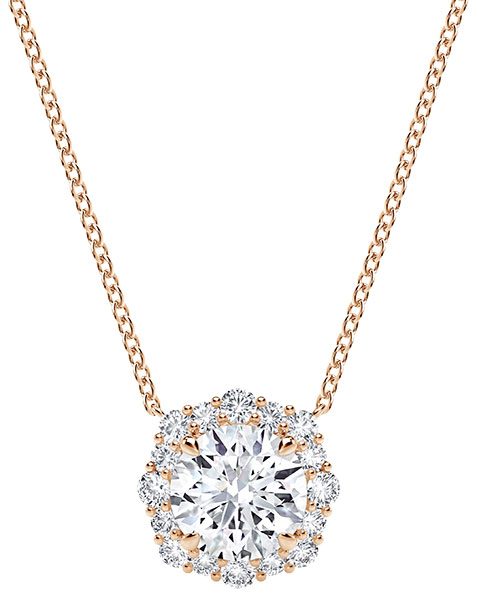
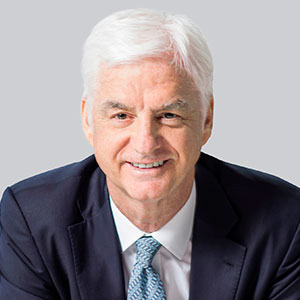 “The industry has bounced back from wars, depressions, recessions, and it will bounce back from this by focusing on its core promise: commitment, timelessness, and classic and enduring products. The future of retail must be less about the transaction and more about creating an experience that immerses people in the wonder of the product and the brand. It must be about human engagement. The industry should truly commit to an omnichannel future and seamless interaction with consumers, removing barriers between digital and in-store while making both environments a world of dreams and inspiration rather than price and discounts.”
“The industry has bounced back from wars, depressions, recessions, and it will bounce back from this by focusing on its core promise: commitment, timelessness, and classic and enduring products. The future of retail must be less about the transaction and more about creating an experience that immerses people in the wonder of the product and the brand. It must be about human engagement. The industry should truly commit to an omnichannel future and seamless interaction with consumers, removing barriers between digital and in-store while making both environments a world of dreams and inspiration rather than price and discounts.”
—Stephen Lussier, executive vice president, consumer and brands, De Beers Group
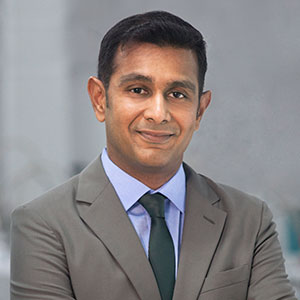 “The pandemic has taught us many lessons, and the primary lesson is that we can never wait to make changes if we believe our business needs evolution. In terms of digitalization, the jewelry industry is lagging in developing and delivering a seamless consumer experience both pre- and post-purchase as well as from offline to online purchasing.”
“The pandemic has taught us many lessons, and the primary lesson is that we can never wait to make changes if we believe our business needs evolution. In terms of digitalization, the jewelry industry is lagging in developing and delivering a seamless consumer experience both pre- and post-purchase as well as from offline to online purchasing.”
—Amish Shah, founder and CEO, ALTR Created Diamonds
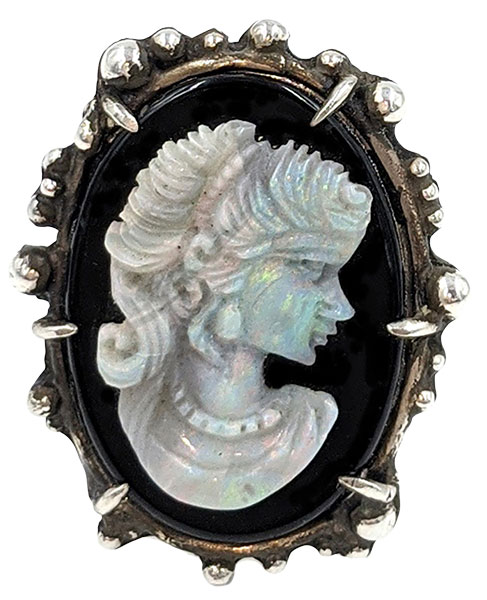
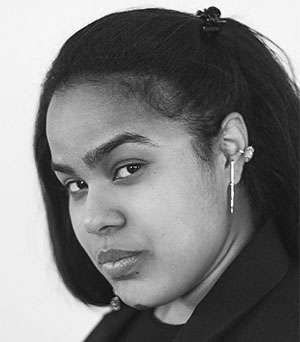 “I see retail continuing to evolve toward direct-to-consumer, online sales channels, and trunk shows at small retail spaces—once it is safe to do so. There are increasing opportunities with retailers like Wolf & Badger, who provide a global platform for emerging designers like me to reach a wider audience. I see more trunk shows and strategic partnerships happening, such as launching a collection with a retailer for a month, and increased collaborations as a way to help more emerging talent—specifically BIPOC jewelry designers—gain access to more clients and continue to sustain their careers for the long term.”
“I see retail continuing to evolve toward direct-to-consumer, online sales channels, and trunk shows at small retail spaces—once it is safe to do so. There are increasing opportunities with retailers like Wolf & Badger, who provide a global platform for emerging designers like me to reach a wider audience. I see more trunk shows and strategic partnerships happening, such as launching a collection with a retailer for a month, and increased collaborations as a way to help more emerging talent—specifically BIPOC jewelry designers—gain access to more clients and continue to sustain their careers for the long term.”
—Angely Martinez, founder and designer, Angely Martinez Jewelry
 “We believe in the power of technology as a tool to reach customers where they are and bring them new experiences in the world of jewelry. Current events bring an opportunity to accelerate our focus in this area to inspire our customers’ imaginations and find new ways to connect with them. To do so will take ideas and energy from everyone.”
“We believe in the power of technology as a tool to reach customers where they are and bring them new experiences in the world of jewelry. Current events bring an opportunity to accelerate our focus in this area to inspire our customers’ imaginations and find new ways to connect with them. To do so will take ideas and energy from everyone.”
—Lisa Bridge, president and CEO, Ben Bridge Jeweler
 “Brick-and-mortar stores are not dead, and, in fact, jewelry stores tend to have lower traffic and more one-on-one service, which lends itself easily to a socially distant but luxurious experience. Consumers are turning away from fashion-trend clothing and accessories and instead looking for investment pieces. Jewelers need to be ready for them by expanding their social media presence and websites to promote direct sales, and also engage directly with customers via email, Zoom, direct message, and WhatsApp.”
“Brick-and-mortar stores are not dead, and, in fact, jewelry stores tend to have lower traffic and more one-on-one service, which lends itself easily to a socially distant but luxurious experience. Consumers are turning away from fashion-trend clothing and accessories and instead looking for investment pieces. Jewelers need to be ready for them by expanding their social media presence and websites to promote direct sales, and also engage directly with customers via email, Zoom, direct message, and WhatsApp.”
—Will Kahn, jewelry editor, @willsnotebook
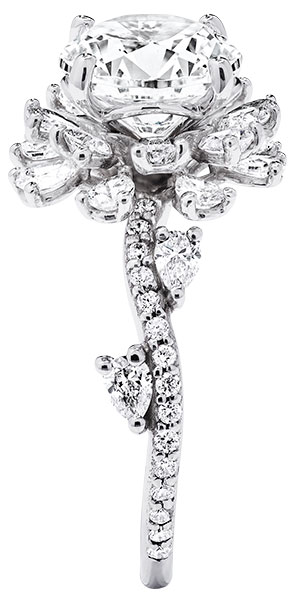
 “Conscious consumerism and values-based shopping will continue to rise in popularity. In turn, the industry needs to focus on providing customers long-lasting, meaningful products that are worth their investment. As we’ve also seen this year, customers expect the brands they support to take an action-oriented approach to diversity and inclusion. The jewelry industry should be proactive about representing and supporting customers of all backgrounds and encouraging diversity within their organizations.”
“Conscious consumerism and values-based shopping will continue to rise in popularity. In turn, the industry needs to focus on providing customers long-lasting, meaningful products that are worth their investment. As we’ve also seen this year, customers expect the brands they support to take an action-oriented approach to diversity and inclusion. The jewelry industry should be proactive about representing and supporting customers of all backgrounds and encouraging diversity within their organizations.”
—Beth Gerstein, cofounder and co-CEO, Brilliant Earth
 “I don’t think the industry bounces back; instead, I think it takes a new shape going forward. It operates without borders or seasonal market cues and really becomes an on-demand offering to feed the needs of an evolved consumer. Jewelry needs to lighten its footprint and find ways to bridge gaps that meet the new luxury customer. The customer will demand—not just want—brands that are rooted in social and environmental consciousness that don’t sacrifice style.”
“I don’t think the industry bounces back; instead, I think it takes a new shape going forward. It operates without borders or seasonal market cues and really becomes an on-demand offering to feed the needs of an evolved consumer. Jewelry needs to lighten its footprint and find ways to bridge gaps that meet the new luxury customer. The customer will demand—not just want—brands that are rooted in social and environmental consciousness that don’t sacrifice style.”
—Lee Stevenson, cofounder, Metal & Smith
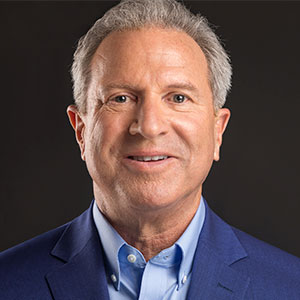 “Demography is showing us the path to the new consumer, defined by three massive spending segments: multicultural consumers, self-purchasing females, and next-generation bridal consumers. The jewelry industry must embrace the new consumer and employ them, create for them, market to them, and provide innovative experiences. He or she who wins the new jewelry consumer wins the race.”
“Demography is showing us the path to the new consumer, defined by three massive spending segments: multicultural consumers, self-purchasing females, and next-generation bridal consumers. The jewelry industry must embrace the new consumer and employ them, create for them, market to them, and provide innovative experiences. He or she who wins the new jewelry consumer wins the race.”
—Marty Hurwitz, cofounder and CEO, MVI Marketing
 “In the short term, retailers should consider the pickup and outside waiting experience for their customers: What does the front of your store look like? Is it welcoming? If folks have to wait outside, do you have seating and something to drink for them? And once they are in your store, have you thought about the in-store experience? This will be key in getting folks to come to you, as we have all now learned how to do everything from home. In the longer term, there is a lot of room for innovation and technology to make purchasing jewelry a seamless experience for customers in-store and online. With the online and offline experiences merging, the industry needs to focus on business-to-business transactions that involve technology and easy-to-use platforms. Retail stores should closely examine their online customer journey and experience, and decide where to invest long-term for creating a platform for e-commerce.”
“In the short term, retailers should consider the pickup and outside waiting experience for their customers: What does the front of your store look like? Is it welcoming? If folks have to wait outside, do you have seating and something to drink for them? And once they are in your store, have you thought about the in-store experience? This will be key in getting folks to come to you, as we have all now learned how to do everything from home. In the longer term, there is a lot of room for innovation and technology to make purchasing jewelry a seamless experience for customers in-store and online. With the online and offline experiences merging, the industry needs to focus on business-to-business transactions that involve technology and easy-to-use platforms. Retail stores should closely examine their online customer journey and experience, and decide where to invest long-term for creating a platform for e-commerce.”
—Yancy Weinrich, chief operating officer, Reed Exhibitions
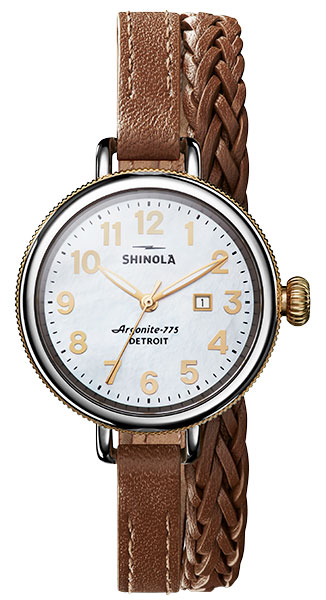
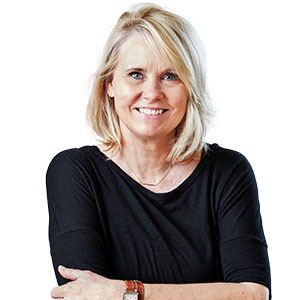 “The jewelry and watch industries bounce back by understanding that consumer behaviors and priorities have changed and [recognizing] the need to meet the guests where they are. A true omnichannel experience is more important than ever, and allocating resources to lean into this initiative is necessary. A higher level of preparedness is essential to be able to react to any change in the business environment. The contingency plan is now more critical than ever.”
“The jewelry and watch industries bounce back by understanding that consumer behaviors and priorities have changed and [recognizing] the need to meet the guests where they are. A true omnichannel experience is more important than ever, and allocating resources to lean into this initiative is necessary. A higher level of preparedness is essential to be able to react to any change in the business environment. The contingency plan is now more critical than ever.”
—Shannon Washburn, CEO, Shinola
 “The jewelry industry needs to adapt to what customers are looking for in this new normal. A few things that will help are strong e-commerce platforms with a streamlined customer service experience and new retail formats that are focused on safety and bridging the gap between physical and virtual experiences. We need to be able to adapt product offerings—as well as shopping experiences—much faster than we historically did.”
“The jewelry industry needs to adapt to what customers are looking for in this new normal. A few things that will help are strong e-commerce platforms with a streamlined customer service experience and new retail formats that are focused on safety and bridging the gap between physical and virtual experiences. We need to be able to adapt product offerings—as well as shopping experiences—much faster than we historically did.”
—Bouchra Ezzahraoui, cofounder, Aurate
 “Automation and digitization will allow us to conduct business more profitably and efficiently. The future of jewelry retail will involve a seamless fluid experience between physical stores, social media platforms, and company websites. There will be less square footage in physical stores and more investment in and reliance on technology that virtually connects consumers with products and salespeople. There will be virtual appointments, home consultations, deliveries, and concierge services that eliminate friction and bring the product to the consumer. As an industry, we have to create greater career opportunities to establish a more inclusive jewelry community which attracts, celebrates, and enthusiastically supports Black and female leaders, as well as millennials, whose perspective will ensure our relevancy for the future. The speed at which we bounce back will be measured by our willingness to enthusiastically embrace this change.”
“Automation and digitization will allow us to conduct business more profitably and efficiently. The future of jewelry retail will involve a seamless fluid experience between physical stores, social media platforms, and company websites. There will be less square footage in physical stores and more investment in and reliance on technology that virtually connects consumers with products and salespeople. There will be virtual appointments, home consultations, deliveries, and concierge services that eliminate friction and bring the product to the consumer. As an industry, we have to create greater career opportunities to establish a more inclusive jewelry community which attracts, celebrates, and enthusiastically supports Black and female leaders, as well as millennials, whose perspective will ensure our relevancy for the future. The speed at which we bounce back will be measured by our willingness to enthusiastically embrace this change.”
—Caryl Capeci, CEO, Chow Tai Fook North America
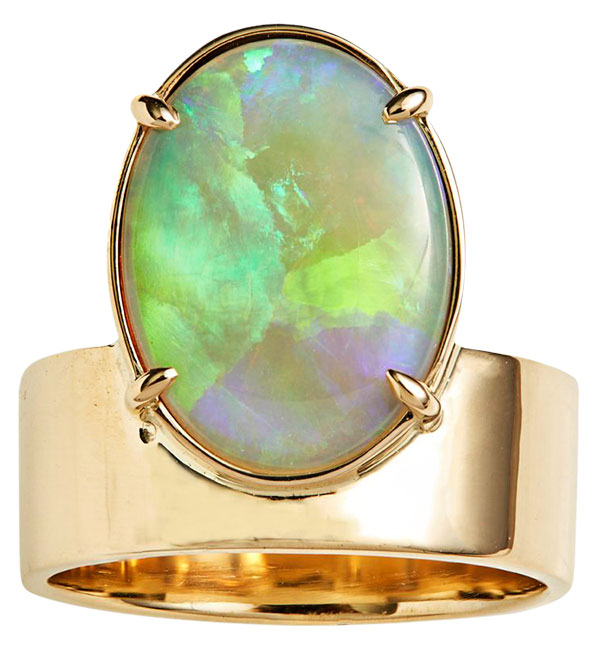
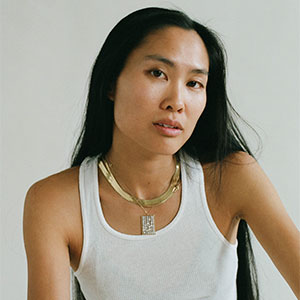 “This industry is still dominated by white cis[gender] males in corporate positions. It’s very much stuck in the early 2000s. Changing the jewelry industry at a systemic level is challenging. The work is specialized, the skills and businesses are often passed between generations of a family, and there are limited job opportunities within the industry in the first place. But to make equitable change is to employ, share skills, and to promote more individuals from underserved communities into positions of knowledge and power.”
“This industry is still dominated by white cis[gender] males in corporate positions. It’s very much stuck in the early 2000s. Changing the jewelry industry at a systemic level is challenging. The work is specialized, the skills and businesses are often passed between generations of a family, and there are limited job opportunities within the industry in the first place. But to make equitable change is to employ, share skills, and to promote more individuals from underserved communities into positions of knowledge and power.”
—Wing Yau, founder, WWake Jewelry
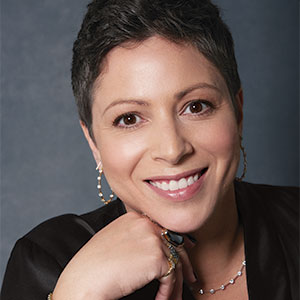 “The jewelry industry I want to be a part of is one that is diverse and equitable for all stakeholders. An industry that honors the earth from which all its products are derived and the people who labor to create the jewelry we are all so passionate about. The structures that have been created in this industry are in place to exclude, oppress, extract, and deny, and they must be torn down so that something more expansive and meaningful can be rebuilt in their place. I want to see all of our trade and media organizations, as well as large industrywide vendors, showing their antiracism support—or we will have to create and patronize new ones. And most importantly, I want us to listen to all marginalized groups in this industry—give them a seat at the table or, better yet, support them building their own tables and follow their lead into a new epoch in jewelry that is rich in diversity at all levels.”
“The jewelry industry I want to be a part of is one that is diverse and equitable for all stakeholders. An industry that honors the earth from which all its products are derived and the people who labor to create the jewelry we are all so passionate about. The structures that have been created in this industry are in place to exclude, oppress, extract, and deny, and they must be torn down so that something more expansive and meaningful can be rebuilt in their place. I want to see all of our trade and media organizations, as well as large industrywide vendors, showing their antiracism support—or we will have to create and patronize new ones. And most importantly, I want us to listen to all marginalized groups in this industry—give them a seat at the table or, better yet, support them building their own tables and follow their lead into a new epoch in jewelry that is rich in diversity at all levels.”
—Jennifer Gandia, co-owner, Greenwich St. Jewelers
 “The industry will be transformed as far as how it works (more remote work where possible), how we connect with customers (social and digital) and each other (fewer galas, trade shows, and travel), and its entire supply chain (more emphasis on ethical and responsible sourcing). We will also need to promote and listen to ideas from underrepresented voices in the industry. Jewelry retail in the future will peel back the layers of authority and formality in order to show real personality, meaning, and values.”
“The industry will be transformed as far as how it works (more remote work where possible), how we connect with customers (social and digital) and each other (fewer galas, trade shows, and travel), and its entire supply chain (more emphasis on ethical and responsible sourcing). We will also need to promote and listen to ideas from underrepresented voices in the industry. Jewelry retail in the future will peel back the layers of authority and formality in order to show real personality, meaning, and values.”
—Tiffany Stevens, president, CEO, and general counsel, Jewelers Vigilance Committee
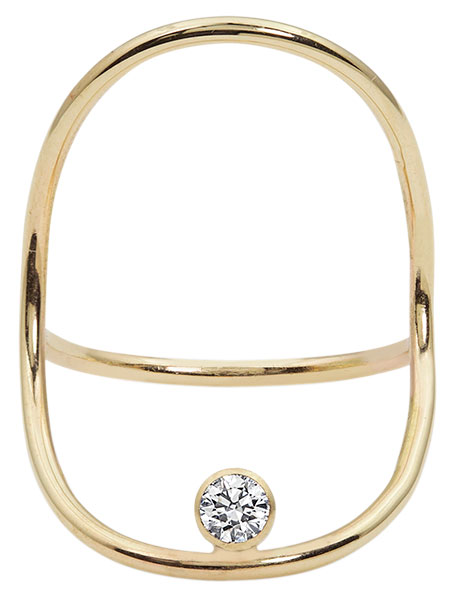
 “I would love to see larger, established companies in the jewelry industry seek out and champion smaller, independent talents from diverse backgrounds, offering mentorship opportunities, business support, design collaboration opportunities, and grants so the ‘next wave’ can grow and sustain their businesses. I also think we need to do a better job of not only making it easier to incorporate more sustainable practices and materials into our businesses, but also clearly educating consumers about the choices they have, from fair-mined and recycled gold to lab-grown diamonds and everything in between, so they can feel confident that their purchases are making a positive impact on the world.”
“I would love to see larger, established companies in the jewelry industry seek out and champion smaller, independent talents from diverse backgrounds, offering mentorship opportunities, business support, design collaboration opportunities, and grants so the ‘next wave’ can grow and sustain their businesses. I also think we need to do a better job of not only making it easier to incorporate more sustainable practices and materials into our businesses, but also clearly educating consumers about the choices they have, from fair-mined and recycled gold to lab-grown diamonds and everything in between, so they can feel confident that their purchases are making a positive impact on the world.”
—Khadijah Fulton, founder and designer, White/Space
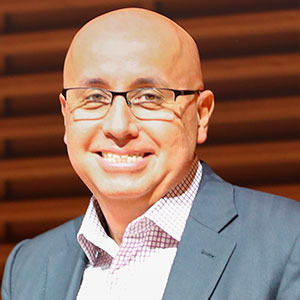 “Stores may be less important in the future. Trusted experts will be more important. The industry needs to hire better-qualified people [with] emotional intelligence as well as develop agility with technology. Brands need to gain privileged access to personal data for the client, with consent, in order to truly personalize. Custom-made pieces may become more important at the high end. The client experience will be a mix of digitally automated elements that make sense—plus human connection and bonding that nurtures the client.”
“Stores may be less important in the future. Trusted experts will be more important. The industry needs to hire better-qualified people [with] emotional intelligence as well as develop agility with technology. Brands need to gain privileged access to personal data for the client, with consent, in order to truly personalize. Custom-made pieces may become more important at the high end. The client experience will be a mix of digitally automated elements that make sense—plus human connection and bonding that nurtures the client.”
—Milton Pedraza, CEO, Luxury Institute
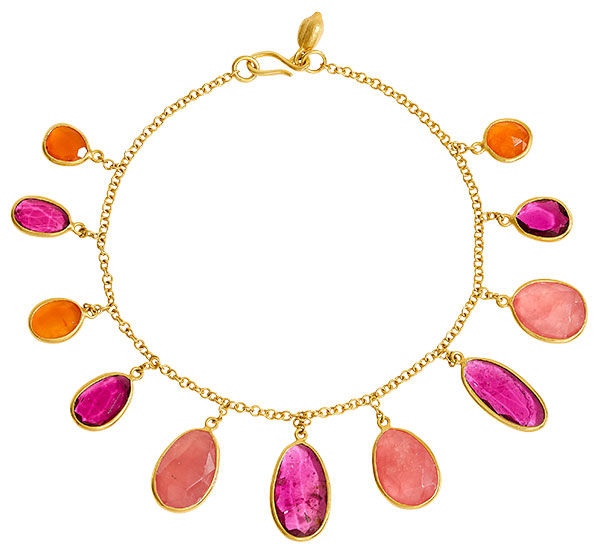
 “Jewelry needs to continue to aggressively challenge the ethical dimensions of the industry. Extractive industries need to be working as environmentally cleanly as possible, involving and benefiting [the] local community, bringing safe jobs, and ensuring cleanups and reforestation. We need to ensure at all points in the chain that there is safe and sustainable employment.”
“Jewelry needs to continue to aggressively challenge the ethical dimensions of the industry. Extractive industries need to be working as environmentally cleanly as possible, involving and benefiting [the] local community, bringing safe jobs, and ensuring cleanups and reforestation. We need to ensure at all points in the chain that there is safe and sustainable employment.”
—Pippa Small, founder and designer, Pippa Small Jewellery
(Martinez: Stefen Pompée)